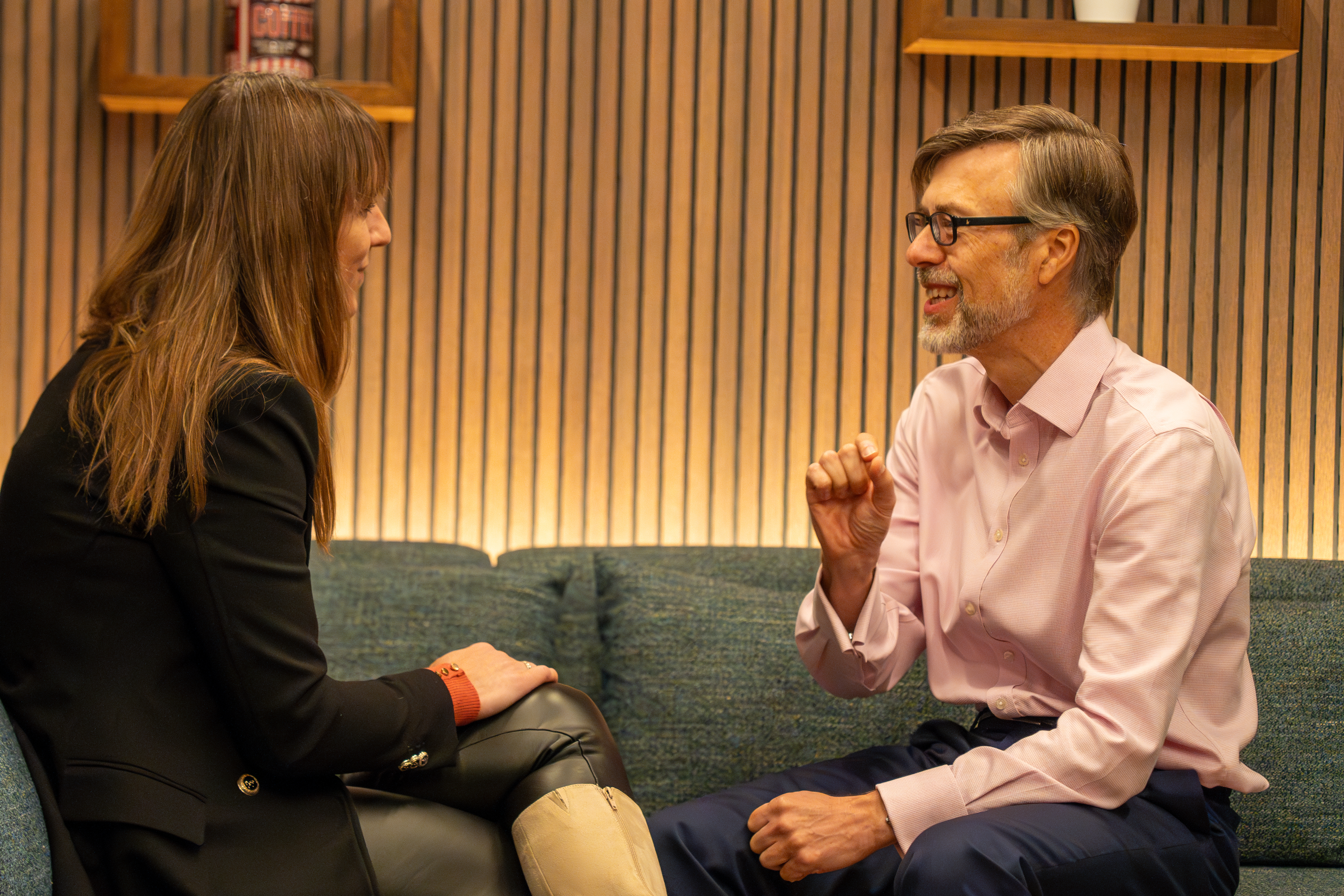From Expert to Leader
From Master Problem Solver to Inspiring Greatness in Others
One of the most common people issues in organisations is employees struggling to make the transition from expert to leader.
What got you here ain’t gonna get you there.
While expertise and some technical leadership in a particular field form a strong foundation, senior people leadership requires a shift in core identity. Effective high-level leadership necessitates the development of additional competencies beyond someone’s knowledge base and technical proficiency.
We can view this progression as going from ‘leading because I have the answers‘ to ‘leading by inspiring new questions.’
Here are several ways in which experts make the transition successfully.
1. Tuning In to Others
Experts tend to become enamoured with their subject—it’s what makes them great, the ‘go-to’ in their field. Specialists often think in terms of immediate problems to be solved.
However, this strength of being able to focus on the immediate issue at hand may also be a person’s weakness in reaching the next level in their leadership. An expert’s focus on developing their skills and knowledge in their chosen subject matter to elevate their professional worth may have been at the expense of growing their ability to tune into those around them.
What is tuning in?
Tuning in starts with listening, but it goes beyond that. It’s rooted in building the habit of inquiring into and discovering what’s ultimately important to others. This forms the basis of a leader’s connection to another and marks the start of a trust-based relationship. It’s strong relationships that create the foundation of someone’s leadership capacity. As a leader, if I know what is important to you and commit to helping you get it, you’re more likely to listen to me and see a positive future for yourself inside of my vision.
In summary, tuning in builds followership. The more someone senses that you get them, the more willing someone is to follow you.
2. Becoming A Possibility Machine
At FirstHuman, we emphasise a leader’s ability to speak new possibilities into being. In fact, it’s at the core of our working-definition of leadership:
Leadership: making things happen beyond what’s predictable.

A Possibility Machine in action
An executive who has successfully transitioned from expert to leader has developed the capacity to ‘think beyond’—think beyond what they know how to do from their history and training. Leaders who have transcended the expert role habitually engage their imagination to develop new possibilities for their company, their team, themselves, and others they lead. They become ‘possibility machines’, churning out new possibilities as openings arise. When leaders orient themselves towards possibility, they open up space around them, asking of others questions like:
‘What if we did this?’
‘How about if you took this on?
‘What if, for a moment, we believed this were possible?
With this behaviour, they create a potent environment around them that invites others to look at the world differently. This environment also naturally encourages others to contribute in novel ways, moving out of the problem-solution paradigm and into a purely creative plane. This orientation of the leader automatically generates ideas for new growth and innovation within his or her team.
3. Self Regulation
We all know the quirky, spikey, or temperamental expert we tolerate because they make such critical individual contributions.
Senior leadership roles, however, require elevated levels of self-awareness and regulation.
We achieve self-regulation through self-awareness, self-management, social regulation, and environmental regulation. These mutually reinforce each other; as we enhance our regulation through any one of these routes, it gets easier to regulate ourselves through another.
Self Awareness

Photo credit: Ashlyn Ciara | unsplash.com
Self-awareness starts with self-reflection. Self-reflection can take many forms, including:
- Solitary contemplation
- Seeking feedback from others
- Practising mindfulness
- Journaling thoughts
- Observing emotions
By developing a habit of self-reflection, leaders can start to notice what works best for them to remain regulated and what triggers them and knocks them off-centre.
Self management
The self-managed leader learns to manage impulses and reactive responses. The leader can do this through techniques to shift emotional state in the moment, such as breathing techniques or other embodied approaches. These techniques generally work on developing the ability to identify a thought or a feeling as it arises, acknowledge it, and then let it go.
Leaders may also need to work at a deeper level, usually with a skilled coach or a therapist, on the causes—usually painful past events, failures or traumas—of why they get triggered into compulsive emotional reactions in the first place.
Self-management is not only about emotional regulation however; for senior leaders, it is also about developing a clear, self-authored direction. Sharing personal goals, commitments and ‘stands for the future’ with others inspires those around them and enables them to find ways to contribute to the leader’s mission.
Social regulation
As individuals, we do not achieve good regulation in a vacuum: our social context can be more or less conducive to healthy interactions, as anyone who’s tried to get sugar-high young children to bed at the end of a long day can attest!
A leader creates a high degree of social regulation for the benefit of themselves and others by developing and acting consistent with a set of guidelines, norms, and behavioural expectations conducive to psychological safety and healthy interactions. These might include:
- Encouraging open communication
- Showing empathy and support
- Normalising mistakes
- Removing morality from accountability
- Respecting diverse perspectives
- Providing constructive feedback
Great leaders develop encourage these patterns of behaviours in their teams and organisations to uplift the regulation of their colleagues for benefit of the whole. Researching examples of great corporate cultural practices in this area can also be instructive.
Environmental regulation
In our urbanised lifestyles, we can forget how much our environment impacts our well-being.
Japan’s Department of Forestry has decades of research on the positive impact that being in nature has on executives.
Making time to be in nature, by one self or with a group—even for brief periods in ‘urban green’ spaces—can be one of the most effective ways to improve our connectedness, levels of creativity, physical health and overall effectiveness as a leader.
4. Shifting Identity
Being the expert or the specialist can often be at the heart of someone’s professional identity. After all, it may have been the most likely reason for their promotions so far in their career.

Image from: www.disposeofthings.com
The idea of being ‘a coder’, ‘a lawyer’, or ‘a soldier’ may provide considerable personal security, and the ego may not want to give it up. Moving into a more senior role might cause self-imposed expectations of having to become ‘the boss’ or ‘be in charge’. The individual often has beliefs they must let go of before fully embracing a more senior leadership role.
Again, coming from pure possibility helps. Allowing aspiring leaders see that they have the freedom to create themselves all over again as leaders can be powerful. Choosing, for example, to ‘be senior’, ‘be bold’ or ‘be inspiring’ can be the start of unlocking a new mode of expression for the aspirant leader. However, shifting “who one is being” comes with risk. It is unpredictable how new style will initially impact those we interact with – hence having a coach or mentor in during this transition is immensely useful.
5. Networking
Building a robust professional network is essential for senior leaders. However, for those in specialised roles attending industry networking events might feel onerous and perhaps like a waste of time.
Leaders making the transition may need to reframe their beliefs about the value of such activity. They may need to shift to seeing them as opportunities to broaden their sense of the possible outside of their immediate purview.
Leaders in our social media age can also build their networks online by becoming content creators and actively engaging on social media sites. People can start by focusing on their immediate expertise, but broadening their repertoire of topics will naturally expand their network over time.
6. Mentorship and Coaching
Many experts may already have mentors and coaches who have helped them develop their specialist competencies. However, new mentors and coaches with a specific focus on how people can be the cause of others expressing their greatness may well be needed as the expert seeks to develop their people-leadership capacity.

FirstHuman Partner Oddi Aasheim coaching a client
Conclusion
Transitioning from expert to leader involves a significant shift in mindset and skill set, demanding much more than technical expertise. The leader must learn to tune into others, foster strong relationships, and habitually envision new possibilities. It also requires investing in their ability to self-regulate and to help regulate those around them. Networking and seeking mentorship or coaching can further support this transformation.
Do you think you or people or your business could use some help making the transition from expert to leader?
Then we’d love to see if we could help you.
Book a call with us here.
